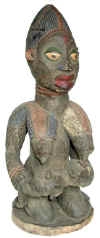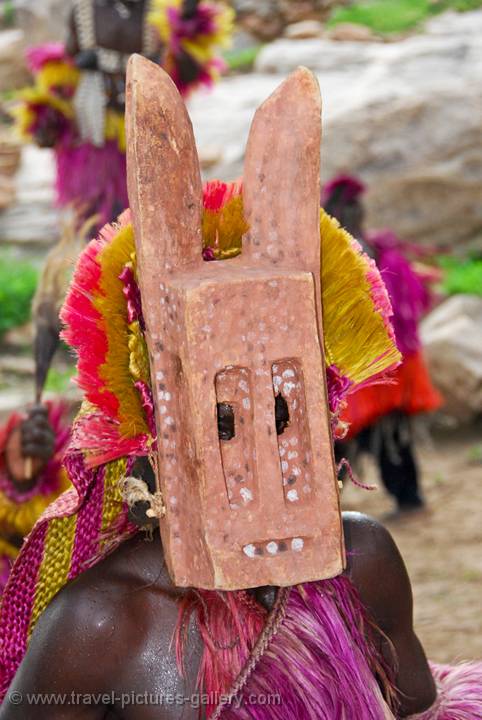Before Christianity and Islam came to the Yoruba people, they had their own set of beliefs. Though their creation story has many different version, they all still shared the same set of gods.
The Yoruba are famous for being able to manage to intertwine their art with their religion. These works of art helped the people visualize how their deities would look like. The sculptures would also be used for worship in their altars.
Though the Congo, the Dogon people, and the Yoruba are all heavily devoted to their religion, only Yoruba is able to bring their culture out of being nomadic peoples. They end up creating a large and very influential kingdom. This kingdom really gained its wealth from trade with other kingdoms which is also a reason why they were well known for selling their people over to the Americas so they could be slaves.

Even if the Yoruba people did not have religion influence them too much, they still were a very respectful people. They were always respecting their elders. They even had certain ways to greet another person as well. These people were well known for their hospitality.
As a result of the Yoruba people using religion to influence their art, and since they were very good sculptors, the culture was praised for having outstanding sculptures. The sculptures showing the individual are typically realistic with the exception of bulging eyes, and in the case of female figures, and large breasts.
The large breasts are yet again used to show motherhood. And it is also used to show that the people can survive because the mother can have the baby, and she can the nurture the child. This is why the female figures always have very exaggerated breasts in African art.
Another art form that Yoruba was known for was their skill in making ornaments. One such ornament is the Hip Ornament from Benin. This is a depiction of an African person's face made of ivory. It shows that the sculptor was able to master the art of realism because the face looks as if it could start talking to you at any second. This is a great example to show that the people of Yoruba were able to master so many type of art in their history which still lives on even today.

SOURCES
http://www.newarkmuseum.org/museum_default_page.aspx?id=5080
http://www.tigweb.org/youth-media/panorama/article.html?ContentID=1088
http://www.zyama.com/yoruba/
http://www.historywiz.com/benin.html
http://wysinger.homestead.com/yoruba.html


